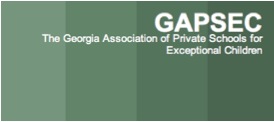Auditory Processing Disorder
Children with auditory processing disorder (APD) may behave as if they have a hearing loss; they may respond inconsistently to speech, often misunderstand what is said, and have difficulty listening or paying attention in noisy environments. Poor memory for verbally presented information and difficulty following long directions can also be common. Children with APD present with a variety of characteristics that affect academic performance, such as a) poor expressive and receptive language abilities; b) poor reading, writing, and spelling; c) difficulty taking notes, d) poor phonics and speech sound discrimination; e) poor ability to memorize; or f) problems following a sequence of instructions.
Children with APD may have difficulty with one or more of the following components
- Auditory Figure-Ground: the ability to process speech in the presence of background noise
- Filtered Words: the ability to process distorted speech; chidren with this difficulty do not accurately process verbal language when the speaker is facing the other direction or is not speaking clearly; this can slow processing speed and affect comprehension
- Time Compressed Sentences (TCS): the ability to process fast-paced speech
- Dichotic Listening: the ability to process competing speech signals coming in through different ears; this is an indicator of how efficiently the neurological signals are crossing the Corpus Callosum, connecting the two hemispheres of the brain
Ear advantage (EA) is the difference in processing ability between the right ear and the left ear. Ear advantage is a powerful indicator of hemispheric dominance for language and neurologically-based language/learning disorders. The direct right-ear-to-left-hemisphere anatomic connection causes a normal right ear advantage in children during dichotic listening. Speech presented to the left ear must travel to the right hemisphere, then through the corpus collosum to the language-dominant left hemisphere. As the corpus callosum myelinates and matures, the difference in performance between right and left ears decreases. The ear advantage provides information about neuro-maturational development of the auditory system.
A child with a typically developing auditory nervous system will not have a difference in performance between ears on monaural tests of degraded speech (filtered words, auditory figure-ground, and time compressed sentences). A small right ear advantage is a more normal finding, evidence that hemispheric function is organized with language located in the left hemisphere. A left ear advantage is a more serious finding, as it can be indicative of poor localization of hemispheric function or right hemisphere function, which can be consistent with language and/or reading problems.
At Porter Academy
Small classes and even smaller academic groups allow for quiet environments and clear speech signals from teachers to students. Teachers utilize strategies to ensure students are understanding directions and concepts such as relaying information through multiple senses and having students repeat information back in their own words to ensure comprehension. Teachers and therapists also work to develop auditory processing and language processing through graded processing tasks. Additionally, we offer Fast ForWord and Integrated Listening Systems to develop foundational auditory processing skills including auditory figure ground and the ability to understand distorted speech (filtered words, fast-paced speech). Our students also engage regularly in sensory-motor activities, focusing on bilateral coordination and mid-line crossing to increase the number, strength, and efficiency of neural networks that connect different areas of the brain.






